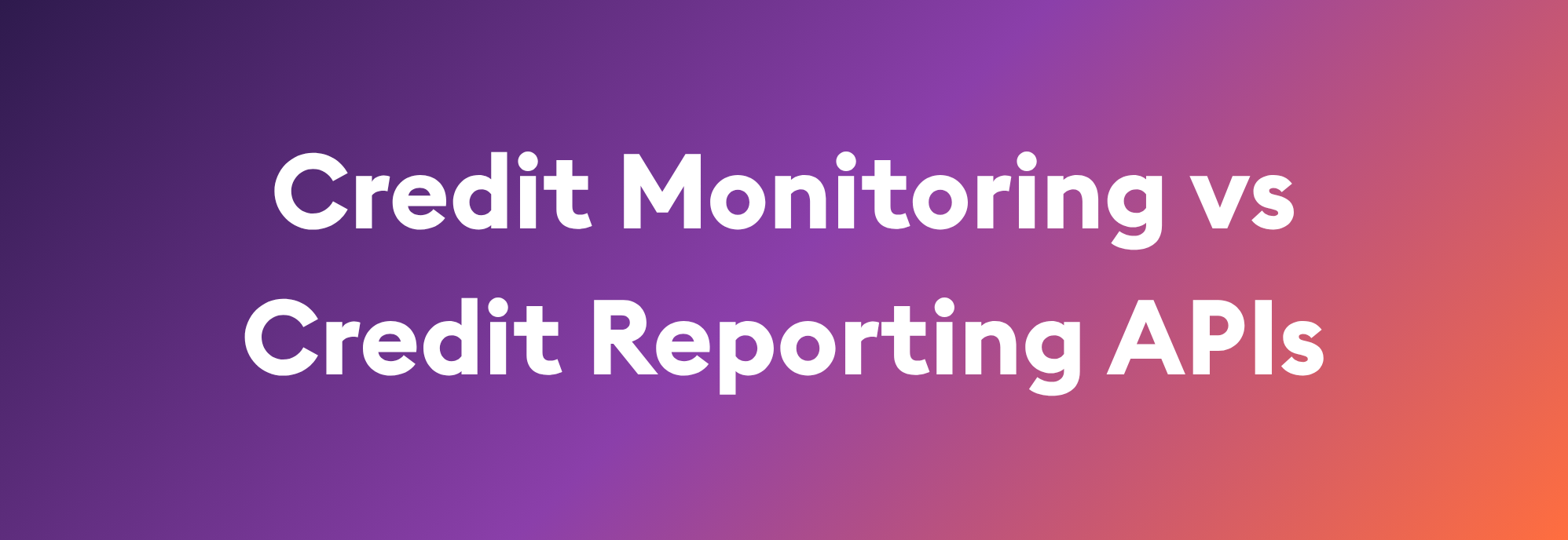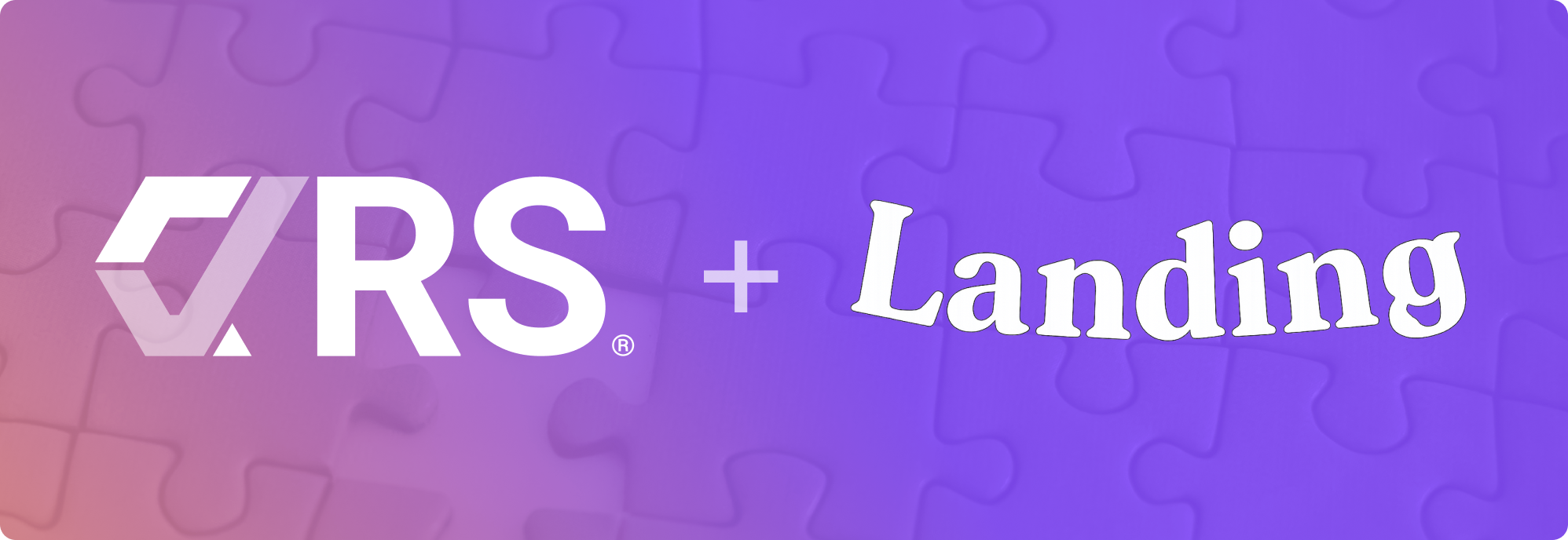Choosing between a Credit Monitoring API and a Credit Reporting API is a critical decision for any organization building financial products or services. While both interfaces provide access to credit data, they serve fundamentally different purposes and operate on distinct technical models. Credit Monitoring APIs deliver real-time alerts about changes in consumer credit files, enabling proactive fraud detection and customer engagement. Credit Reporting APIs, by contrast, provide comprehensive snapshots of credit history at a specific point in time, supporting underwriting, risk assessment, and compliance documentation. Understanding these seven key differences—from core functionality and data coverage to cost structure and target audience—will help you select the right API for your business needs and ensure your credit data strategy aligns with both operational goals and regulatory requirements.
Core Functionality
The most fundamental distinction between Credit Monitoring and Credit Reporting APIs lies in how they deliver data and what they’re designed to accomplish.
Credit Monitoring APIs are built for continuous surveillance. They track credit report activities in real time, alerting users to credit score changes, new inquiries, account openings, and other significant events as they happen. This ongoing vigilance makes them ideal for fraud detection and rapid consumer notification. When a suspicious inquiry appears on a consumer’s credit file at 2 a.m., a monitoring API can trigger an immediate alert, allowing the consumer or business to respond before damage occurs.
Credit Monitoring API: A Credit Monitoring API provides real-time alerts and updates about changes in a consumer’s credit report, enabling fast responses to fraud or errors.
Credit Reporting APIs operate on an entirely different model. These interfaces deliver comprehensive, static reports that capture an individual’s complete credit history at the moment of the request. Rather than tracking changes over time, they provide a detailed snapshot that includes loans, credit utilization, payment behaviors, and public records. This makes them essential for due diligence processes, lending decisions, and compliance documentation where a complete picture is needed at a specific point in time.
Credit Reporting API: A Credit Reporting API delivers a comprehensive summary of an individual’s credit history, typically including loans, credit utilization, and payment behaviors at a single point in time.
The technical advantages of each approach align with their intended use. Monitoring APIs excel at event-driven architecture, using webhooks and push notifications to deliver information the moment it becomes available. Reporting APIs prioritize depth and completeness, pulling together data from multiple sources into a single, authoritative document that can be stored, analyzed, and used for regulatory purposes.
Data Coverage
The breadth and source of credit data vary significantly between Monitoring and Reporting APIs, with direct implications for risk assessment and regulatory compliance.
Most Credit Monitoring APIs track activity across two of the three major credit bureaus—typically Equifax and TransUnion. According to industry research, Experian is frequently omitted from monitoring services, which can create blind spots for consumers and businesses requiring a complete credit picture. This two-bureau approach reduces costs and complexity for monitoring providers but may miss important changes that appear only on the excluded bureau’s report.
Credit Reporting APIs take a different approach, prioritizing comprehensive coverage. These interfaces are purpose-built to unify data from all three major bureaus—Equifax, Experian, and TransUnion—into a single report. This tri-bureau coverage is particularly important for lending decisions, where missing data from even one bureau could result in an incomplete risk assessment or an unfair decision for the consumer.
|
Feature |
Credit Monitoring APIs |
Credit Reporting APIs |
|---|---|---|
|
Bureau Coverage |
Typically 2 bureaus (Equifax, TransUnion) |
All 3 bureaus (Equifax, Experian, TransUnion) |
|
Data Completeness |
Focused on changes and alerts |
Comprehensive historical data |
|
Update Frequency |
Real-time as changes occur |
On-demand or scheduled pulls |
|
Best For |
Ongoing surveillance |
Point-in-time decisioning |
The choice between these coverage models depends on your use case. If you’re building a consumer-facing fraud alert system, two-bureau monitoring may provide sufficient protection at a lower cost. But if you’re underwriting loans or making high-stakes credit decisions, the comprehensive tri-bureau data from a Reporting API becomes essential for both accuracy and compliance.
Alerts and Notifications
The responsiveness and alerting capabilities of Credit Monitoring APIs represent one of their most valuable features, setting them apart from traditional reporting solutions.
Credit Monitoring APIs provide immediate notifications for a wide range of credit file changes. These real-time alerts enable prompt fraud response and help consumers stay informed about their credit health. Common alert triggers include:
-
New credit inquiries or applications
-
Changes to existing account balances
-
New accounts opened in the consumer’s name
-
Address or personal information updates
-
Significant credit score fluctuations
-
Public records or collection accounts added
-
Accounts closed or paid off
Real-time alert: An instant notification sent whenever a relevant change in credit data is detected, empowering users to act quickly to protect their financial profile.
Credit Reporting APIs typically do not include proactive alerting functionality. Users must manually pull reports or configure scheduled queries to check for changes, which introduces latency that can delay the discovery of fraud or errors. If a fraudulent account is opened on Monday but your system only pulls credit reports weekly, that six-day gap could allow significant damage to occur.
This difference in alerting capability has real-world implications for risk mitigation. A study by the Central Bank of the Midwest notes that credit monitoring services provide peace of mind and help consumers spot identity theft quickly. For businesses, these instant notifications can trigger automated workflows—freezing accounts, initiating verification procedures, or alerting fraud teams—before fraudulent activity escalates.
Cost Structure
Pricing models and total cost of ownership diverge significantly between Monitoring and Reporting APIs, making it essential to understand long-term financial implications before committing to either approach.
Credit Monitoring APIs typically operate on subscription-based models. These range from free limited plans that cover basic monitoring features to premium packages offering expansive alerting, multi-bureau access, and additional identity protection services. According to Investopedia, some basic monitoring plans start at $0 but may restrict features like the number of bureaus monitored, alert frequency, or access to credit scores. Premium subscriptions can range from $10 to $30+ per user per month, depending on the feature set and level of service.
Credit Reporting APIs generally use tiered or per-report pricing structures. Organizations pay for each credit report pulled, with rates varying based on the level of detail, number of bureaus included, and volume commitments. A single tri-bureau report might cost anywhere from $5 to $50 depending on the provider and data package, while high-volume enterprise agreements can negotiate lower per-unit costs through batch processing arrangements.
Consider these cost scenarios:
-
Consumer app with 10,000 users: A Monitoring API at $15/user/month generates $150,000 in monthly costs but provides continuous value. A Reporting API pulling one report per user per month at $10/report costs $100,000 but delivers only periodic snapshots.
-
Lending platform processing 5,000 applications monthly: A Reporting API at $20/report costs $100,000/month for underwriting pulls. A Monitoring API subscription model would be impractical since applicants aren’t ongoing users.
-
Enterprise portfolio monitoring: Tracking 50,000 existing customers with a Monitoring API might cost $500,000/month on subscriptions, while scheduled quarterly Reporting API pulls would cost $2.5 million/quarter ($833,000/month) but provide less timely data.
The optimal choice depends on your use case frequency, user base size, and whether you need continuous monitoring or point-in-time assessments.
User Experience and Support
Experience and usability differences between Monitoring and Reporting APIs shape expectations for onboarding, ongoing use, and the technical resources required for successful implementation.
Credit Monitoring APIs prioritize user-friendly platforms designed for consumer engagement. These interfaces typically feature intuitive dashboards, mobile accessibility, and visual representations of credit health that make complex financial data understandable at a glance. The user experience focuses on simplicity—consumers can view their credit status, understand what’s changed, and respond to alerts without needing technical expertise. According to research on credit monitoring services, this accessibility is a key advantage, making it easier for consumers to stay engaged with their credit health over time.
Credit Reporting APIs are built for technical and risk professionals rather than end consumers. These interfaces require deeper integration knowledge and more robust technical resources. IT teams need to understand authentication protocols, data parsing, error handling, and compliance requirements. The learning curve is steeper, but the payoff is greater control and customization for enterprise workflows.
Typical features and support resources differ accordingly:
Credit Monitoring APIs:
-
Mobile-first responsive design.
-
Consumer-facing dashboards and visualizations.
-
In-app chat support and knowledge bases.
-
Automated onboarding with minimal technical setup.
-
Educational content about credit health and fraud prevention.
Credit Reporting APIs:
-
RESTful endpoints with comprehensive documentation.
-
Sandbox environments for testing and development.
-
Dedicated technical account managers.
-
U.S.-based support teams familiar with compliance requirements.
-
Custom onboarding calls and integration assistance.
-
Detailed API reference guides and code samples.
CRS exemplifies the consultative approach that enterprise clients need, offering personalized onboarding support and ongoing partnership rather than simply providing API credentials and documentation. This hands-on guidance helps organizations navigate complex compliance requirements and optimize their integration for maximum value.
Integration with Other Services
Understanding how each API type fits within broader technology ecosystems helps organizations plan effective implementations that maximize value across their entire platform.
Credit Monitoring APIs commonly power personal finance applications and customer engagement solutions. Their real-time alerting capabilities integrate naturally with mobile notification systems, customer relationship management platforms, and fraud detection workflows. These APIs work well in consumer-facing applications where ongoing engagement and immediate response are priorities. Integration patterns typically involve webhook configurations that push alerts to application servers, which then trigger notifications, emails, or in-app messages to end users.
Credit Reporting APIs are increasingly embedded within lending and underwriting platforms, marketing filters, and legal and compliance systems. These integrations support complex workflows including batch processing for portfolio reviews, FCRA compliance checks with proper permissible purpose documentation, and loan decisioning engines that combine credit data with alternative data sources. According to CRS’s integration guidance, modern Reporting APIs can unify data from all three major bureaus into a single endpoint, dramatically simplifying the technical architecture compared to maintaining separate integrations with each bureau.
Typical integration patterns include:
Monitoring API Integration:
-
User authorization and consent collection.
-
Webhook endpoint configuration for alerts.
-
Event listener setup in application server.
-
Notification routing to appropriate channels.
-
Dashboard integration for user-facing credit views.
Reporting API Integration:
-
Permissible purpose validation and compliance setup.
-
Authentication and security credential management.
-
Request formatting with required consumer identifiers.
-
Response parsing and data normalization.
-
Storage and audit trail creation for regulatory compliance.
-
Integration with decisioning engines or risk models.
The unified approach offered by platforms like CRS simplifies this complexity by providing a single API that handles multiple credit bureaus alongside fraud detection and identity verification services. This consolidation reduces integration time, minimizes technical debt, and streamlines ongoing maintenance compared to managing multiple vendor relationships.
Target Audience
The ideal users and use cases for each API type differ substantially, helping organizations quickly determine which solution aligns with their needs.
Credit Monitoring APIs are best suited for individual consumers seeking identity theft protection, credit health insights, and proactive alerts. These users want to understand how their credit is changing over time and receive immediate notification of suspicious activity. Consumer finance apps, credit education platforms, and identity protection services rely on Monitoring APIs to deliver ongoing value to their user base. The Central Bank of the Midwest research confirms that consumers value monitoring services primarily for peace of mind and the ability to spot identity theft quickly.
Credit Reporting APIs are designed for organizations making credit-related decisions. This includes lenders evaluating loan applications, fintechs building innovative financial products, banks managing portfolio risk, and risk officers fulfilling regulatory requirements. These users need comprehensive, point-in-time credit data to support underwriting decisions, monitor portfolio health, and maintain compliance with regulations like the Fair Credit Reporting Act (FCRA).
|
User Type |
Primary Needs |
Ideal API Solution |
|---|---|---|
|
Individual Consumers |
Fraud alerts, credit score tracking, identity theft protection |
Credit Monitoring API |
|
Fintech Startups |
Fast integration, modern architecture, scalable pricing |
Credit Reporting API (unified) |
|
Traditional Lenders |
Comprehensive bureau data, FCRA compliance, audit trails |
Credit Reporting API (tri-bureau) |
|
Consumer Finance Apps |
Real-time engagement, user-friendly data, mobile alerts |
Credit Monitoring API |
|
Risk Management Teams |
Portfolio monitoring, batch processing, historical analysis |
Credit Reporting API |
|
Identity Protection Services |
Immediate fraud detection, multi-bureau coverage |
Credit Monitoring API |
Organizations with sophisticated needs may use both API types for different purposes—Monitoring APIs to engage existing customers and Reporting APIs to underwrite new applicants. The key is matching the API’s capabilities to the specific business problem you’re solving and the audience you’re serving.
Frequently Asked Questions
What is the primary purpose of Credit Monitoring APIs versus Reporting APIs?
Credit Monitoring APIs provide real-time notifications about credit report changes, enabling proactive fraud detection and ongoing credit health tracking. Reporting APIs deliver full or partial static credit reports for compliance, underwriting, and analysis—providing comprehensive snapshots of credit history at a specific point in time rather than continuous updates.
How do Credit Monitoring and Reporting APIs differ in data delivery?
Credit Monitoring APIs offer ongoing, event-driven updates and alerts that notify users immediately when changes occur in a credit file. Reporting APIs give a detailed, point-in-time snapshot of the credit file as requested, without automatic notifications or continuous tracking between pulls.
What are common use cases for each API type?
Credit Monitoring APIs are utilized for fraud prevention, consumer engagement, identity theft protection, and credit health education. Reporting APIs support loan origination, risk reviews, portfolio management, marketing prescreens, tenant screening, and regulatory documentation where comprehensive credit history is essential for decisioning.
How do these APIs handle compliance and regulatory requirements?
Credit Monitoring APIs focus on transparent, timely alerts for consumers and typically include consent management for ongoing access to credit data. Reporting APIs are built to support regulatory compliance—including FCRA documentation, permissible purpose validation, adverse action notices, and audit trails that demonstrate proper use of consumer credit information.
What are the key technical integration differences?
Monitoring APIs often use webhook or event-driven integration for real-time updates, pushing notifications to your application when changes occur. Reporting APIs typically involve REST endpoints that your system calls to pull or schedule credit reports on demand, with responses containing structured data that must be parsed and stored according to compliance requirements.









